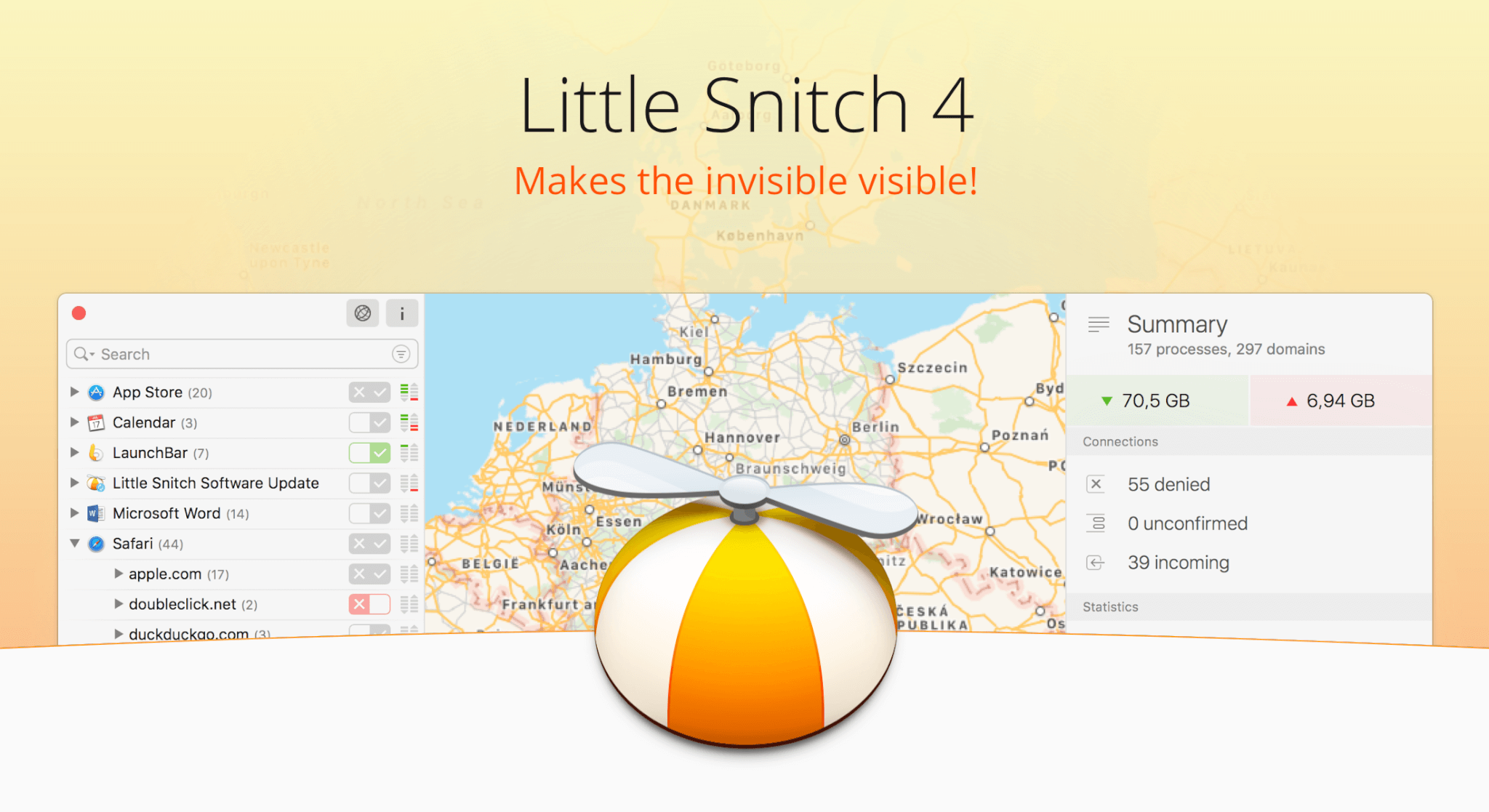Little Snitch For Ipad
If you’re an iOS developer, this will make you very happy: Little Snitch 3.5 greatly improves support for iOS Simulator apps in every regard.
- Little Snitch Alternative
- Little Snitch Mac
- Little Snitch Ipad
- Little Snitch For Ipad
- Little Snitch For Ipad Free
- Little Snitch For Ipad Air
- Nov 24, 2015 You can like or dislike Little Snitch, and you can be for or against transparency, you can support or oppose the inquisitive mind and the search for answers, but there is an underlying problem here, that has nothing to do with Little Snitch. It is the fact that a process like APSD even exists.
- The Mac OS X firewall can block some or all inbound connections. However, to be 100 percent secure, the vigilant Mac OS X user should also monitor and manage outbound connections. Little Snitch is.
Jan 06, 2020 I just noticed that this finally was updated for el capitan. I'm just waiting on a few others that I purchased. Jan 08, 2013 This is the official guide for the Mac application Little Snitch. A firewall protects your computer against unwanted guests from the Internet. Little Snitch protects your private data from being sent out. As soon as you’re connected to the Internet, applications can potential.
First and foremost, apps and processes that run in iOS Simulator are now easily recognizable by their name. For example, the iOS version of Safari is shown as “Safari (iOS)”:
Paths to iOS Simulator apps are clearly marked with a prefix. For stock apps like Safari, Maps or an iOS system daemon, Little Snitch will show “iOS Simulator” followed by the full path to the app’s or process’ binary. That path will be somewhere deep inside the Xcode app bundle, as can be seen in the Network Monitor’s inspector:
Here comes the interesting part: What about apps that you as an iOS developer create and then test in iOS Simulator? If you ever poked around the file system and tried to find out how Xcode and iOS Simulator manage your apps on disk, you probably discovered a path that looks like this: /download-cooking-books-for-free.html.

~/Library/Developer/CoreSimulator/Devices/97F0609B-D9D5-4B8B-A56E-170254F30F6B/data/Containers/Bundle/Application/A3CE365D-E348-439B-871A-A2884409831B/Test.app
Every app you test resides in a directory somewhere inside your home directory’s hidden Library folder whose name is a random unique identifier (UUID) that is generated for every combination of iOS version and iOS device flavor you test against which contains another random unique identifier and then your app. To top it all off, different versions of Xcode have different directory structures for all this (the above example is from Xcode 6).
In previous versions of Little Snitch all this caused problems because rules in Little Snitch are created for a process at a certain path. This means if you create a rule for an app, it only works as long as the path stays the same. Now, iOS Simulator apps don’t play nicely with this because every time Xcode and iOS Simulator decide to use a new path, you’d get a Connection Alert from Little Snitch when your app tried to do some networking.
Little Snitch 3.5 solves this problem by becoming aware of which apps on your Mac are actually run in iOS Simulator and whether they reside in one of iOS Simulator’s random container paths. For such apps, a rule’s path is automatically shortened to something like “iOS Simulator → Test.app/Test” and it just works regardless of what the exact path is.
There’s nothing special you have to do as an iOS app developer. Rules can be created like any other rule using the Connection Alert, Network Monitor or Configuration.
Little Snitch Alternative
As a bonus, when creating a new rule in Little Snitch Configuration you get a list of all the apps that are currently installed in any of your iOS Simulator configurations, allowing you to create rules very easily:
Despite adding all of these improvements to Little Snitch, we made sure this convenience doesn’t open up any security holes whereby a malicious app could trick Little Snitch into allowing network access by just moving itself into an iOS Simulator container directory.
Little Snitch Mac
You can download the latest version of Little Snitch – including the latest nightly build that contains all this iOS goodness – on our Little Snitch download page.
Little Snitch Ipad
Starting with macOS 10.15.4 the above “Legacy System Extension” message will be shown when Little Snitch is installed.
→ Please read this blog post to learn more about why this message is shown.
Will there be an update of Little Snitch that’s compatible with macOS 10.16?
Little Snitch For Ipad
Yes. We are going to release Little Snitch 5 later this year, which will be compatible with macOS 10.16. → Learn more…
Will I get the update for free?
Little Snitch For Ipad Free
Yes. All licenses sold now include a free upgrade to Little Snitch 5. In addition, customers who purchased Little Snitch 4 within a one-year period prior to the final release of Little Snitch 5 will also get a free upgrade. → Learn more…
Will Little Snitch 4 run on macOS 10.16?
Little Snitch For Ipad Air
Little Snitch 4 will not be loaded on macOS 10.16 by default, but there will still be an option to allow the loading. → Learn more…